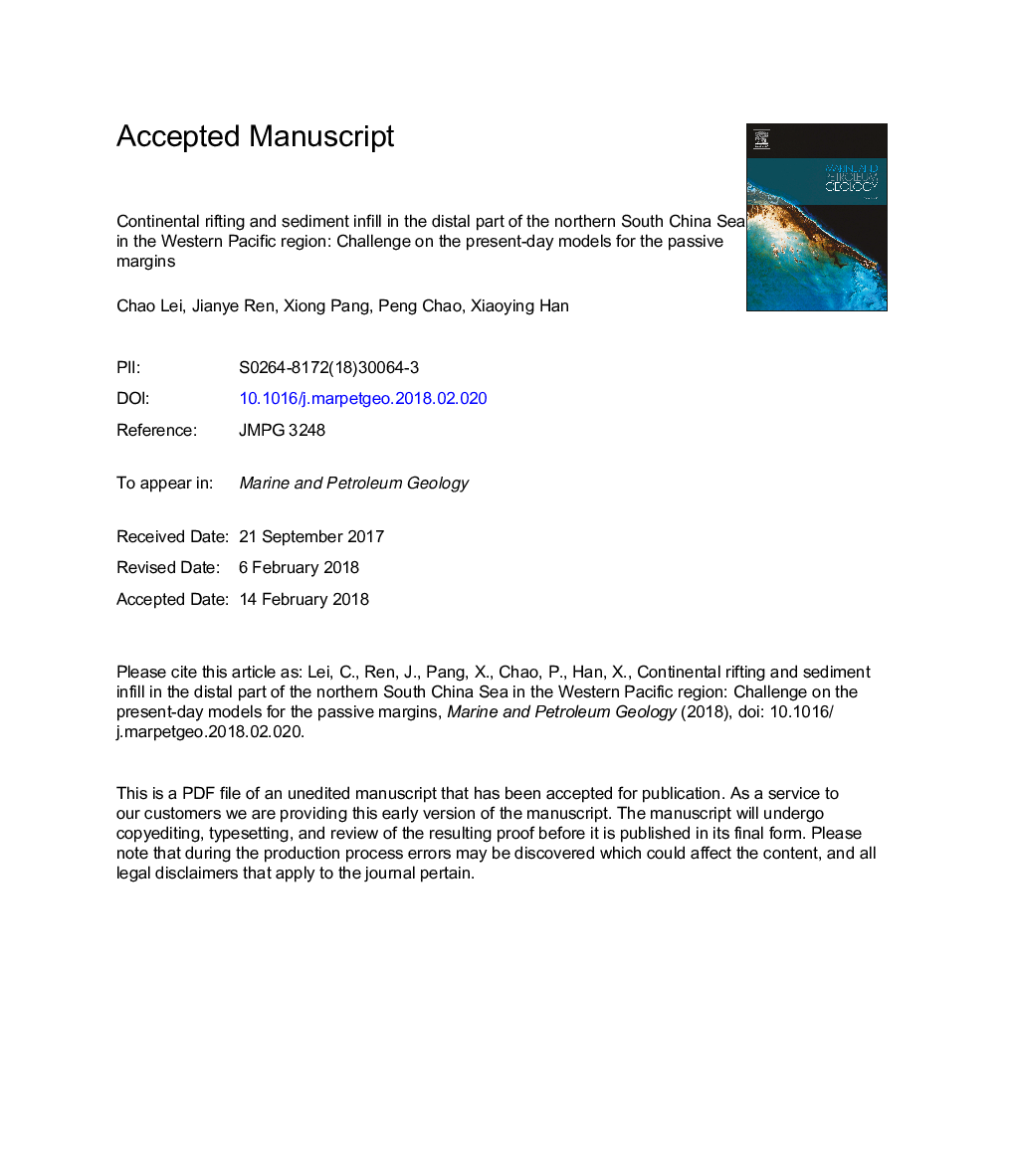| Article ID | Journal | Published Year | Pages | File Type |
|---|---|---|---|---|
| 8909082 | Marine and Petroleum Geology | 2018 | 48 Pages |
Abstract
Well-known difficulties in imaging structures and sediment infill in the distal margins covered by deepwater and thick sediment in the western Pacific have limited our ability to interpret rifting-to-drifting processes of these margins. We used a wealth of multi-channel seismic profiles and drilling data to construct a regional stratigraphic framework for the Cenozoic strata in the Xingning-Jinghai Subbasin, which is now located to the north of the apparent oceanic crust in the South China Sea. Eight sequence-bounding unconformities segmented seven sequence stratigraphy can be confidently recognized in our survey using mostly standard criteria for identification. The particular arrangement of strata elements in the syn-rift succession presents two contrast geometry sedimentary packages, whose pattern is different with that bounded by high-angle faults on the continental shelf observed by the previous studies. In the Xingning-Jinghai Subbasin, strata pattern on the hangingwall of the low-angle faults shows that the faults bounding the depocenters were initially formed by high-angle faults, which is similar to the present-day high-angle faults on the continental shelf. Subsequently the high-angle faults in the deepwater region were rotated to be extensional detachment low-angle faults, which extremely thinned the crust from â¼33â¯km to â¼8-10â¯km. The low-angle detachment fault systems can be used to explain the magmatic addition during the post-rift stage on the hyper-extended crust in the northern margin. The hyper-extended crust of the South China Sea with the characteristics of landward-dipping low-angle faults, high-velocity lower crust and moderately magmatism challenges the magma-poor or magma-rich models constructed from the Atlantic margins.
Related Topics
Physical Sciences and Engineering
Earth and Planetary Sciences
Economic Geology
Authors
Chao Lei, Jianye Ren, Xiong Pang, Peng Chao, Xiaoying Han,
